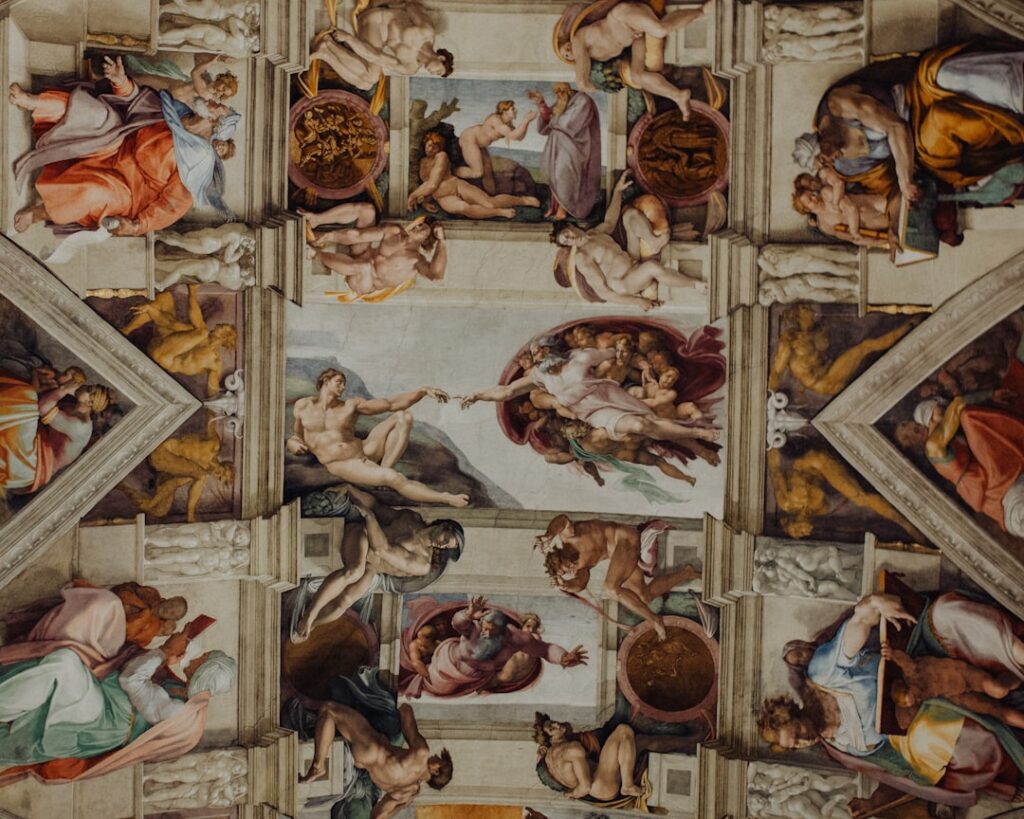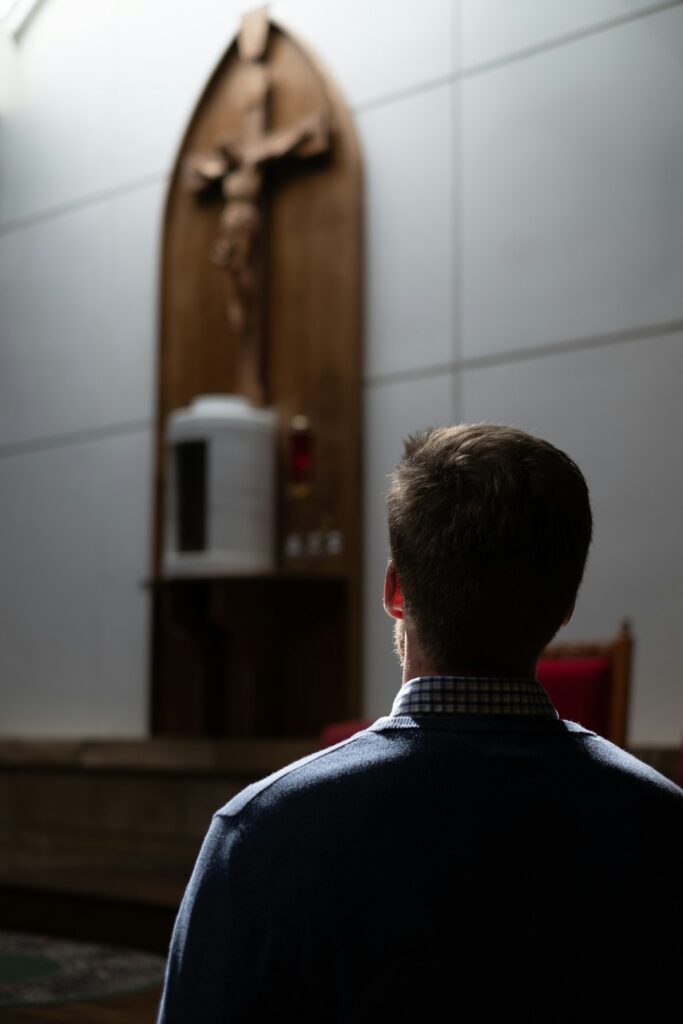By Paschal M. Corby OFM Conv.
Introduction
Morality as a practical science, defined by practical (as opposed to speculative) reason, deals with immanent reality. It is rooted in the ‘here-and-now’ of human affairs, enveloping the limitations and messiness of human life. But since morality is a human science, and human beings are spiritual beings, it also embraces the transcendent. The transcendent nature of morality incorporates ideas of self-realisation, of one’s destiny or end, drawing together ideas of punishment and reward.
When approached as a theological discipline, the transcendent nature of morality becomes more pronounced. For the Christian, morality is rooted in anthropology, in our creation in the image of God (Genesis 1:27). But, as Joseph Ratzinger once noted: “We do not understand man when we ask only where he comes from. We understand him only when we also ask where he can go. Only from his height is his essence really illuminated.”[1] In Veritatis splendor John Paul echoes the eschatological orientation of these words, placing them squarely within a Christological context, when he writes: “Only in the mystery of Christ’s Redemption do we discover the ‘concrete’ possibilities of man.”[2]

The purpose of this paper, which will unfold over the following months, is to draw out the eschatological orientation of morality as contained within John Paul II’s encyclical Veritatis splendor. In the process I will consider the intrinsic link between morality and eternal life as contained in the preaching of Christ and interpreted by John Paul. The Christological focus of the morality of Veritatis splendor will be highlighted as well as the dependence on grace. In the final section of the paper, I propose that the eschatological focus of Veritatis splendor might serve as a hermeneutical key to understanding the more polemic parts of the encyclical, especially its response to questions of conscience, the immanentizing of moral theology and the so-called ‘teleological’ moralities.
The intrinsic link between morality and eternal life
Because of the transcendent nature of man, human acts – the matter of morality – do not end in their accomplishment, or their intended purpose. Rather, as rationally willed, they are constitutive of man and of his end. This is a dominant theme within Veritatis splendor. According to John Paul, “the moral life has an essential ‘teleological’ character, since it consists in the deliberate ordering of human acts to God, the supreme good and ultimate end (telos) of man.”[3]
This presumed connection between ethics and eschatology is not without controversy. This is particularly played out in interpretations of Christ’s beatitudes, and of whether they should be interpreted ethically or eschatologically. As William C. Mattison notes, biblical scholarship has tended to draw a line between the two. It is assumed that the beatitudes are primarily eschatological projections, which were later subject to ethical categories. Or that they are properly blessings that do not participate in God’s commands. However, Mattison rejects this ‘dichotomized’ approach to ethics and eschatology.
If the eschaton as eternal happiness is marked by activity that is continuous with, or intrinsically related to, activity in this life, then there can be no dichotomization between eschatology and ethics. Ethics is eschatological to the extent that it is oriented toward the telos/happiness of the eschaton, and enjoins activity that is already in a limited sense a participation in that destiny. Eschatology is also ethical, to the degree that its ultimate happiness and deliverance entail human (obviously grace-enabled) activity, activity which is continuous with the (also grace-enabled) activity of this life that is a limited albeit constitutive foretaste of that ultimate destiny.[4]
This intimate connection between beatitude, ethics and eschatology is reflected in the Catechism: “The beatitude we are promised confronts us with decisive moral choices.”[5] Eschatology (promise) and ethics (moral choice) are intimately linked. Morality has an eschatological orientation. In this light, Veritatis splendor embraces, from the beginning, the theme of man’s end. Man is called to salvation; to “become ‘light in the Lord’ and ‘children of light’ (Eph 5:8), and are made holy by ‘obedience to the truth’ (1 Peter 1:22).”[6] In light of this end, the essential link between the moral life and blessedness is established.
“Teacher, what good must I do to have eternal life?” (Matthew 19:16)
To illustrate this intrinsic connection between morality and blessedness, John Paul begins Veritatis splendor with a profound reflection of the interaction between the rich young man and our Lord as found in Matthew’s gospel (Matthew19:16-22).[7] The fruits of this reflection are manifold.[8] However, for our purposes here, John Paul specifically notes “the relationship clearly indicated in the divine commandments, between the moral good of human acts and eternal life.”[9]
The young man approaches Christ with a question: “Teacher, what good must I do to have eternal life?” (Matthew 19:16). This question immediately places one within the eschatological frame of morality. As John Paul notes: “The young man senses that there is a connection between moral good and the fulfilment of his own destiny.”[10] His question to Jesus is not limited to “rules to be followed,” but embraces “the full meaning of life.”[11] This sensed connection is not novel. It is present in the Old Law with which the young man is clearly familiar. In presenting Israel with the Law, Moses proclaims: “I call heaven and earth to witness against you this day, that I have set before you life and death, blessing and curse; therefore choose life, that you and your descendants may live, loving the Lord your God, obeying his voice, and cleaving to him” (Deuteronomy 30:19-20). The Gospel of Christ, too, frequently draws out this connection between morality and blessedness. We think immediately of the scene of the final judgment, in which eternal life and death are linked to actions for or against charity (see Matthew 25:31-46).
In reply, Christ first acknowledges the question of ‘the good’. “Why do you ask me about what is good? One there is who is good” (Matthew 19:17). To inquire about the good is not primarily tied to action. Rather, it penetrates to the very core of being and to the source of morality. As John Paul attests: “To ask about the good, in fact, ultimately means to turn towards God, the fullness of goodness. Jesus shows that the young man’s question is really a religious question, and that the goodness that attracts and at the same time obliges man has its source in God, and indeed is God himself.”[12]
It is only after establishing this priority, that Christ offers the young man a way. “If you would enter life, keep the commandments” (Matthew 19:17). As John Paul interprets: “In this way, a close connection is made between eternal life and obedience to God’s commandments: God’s commandments show man the path of life and they lead to it.”[13] Or, in the words of Gilbert Meilaender in his commentary on the encyclical, “[t]eleology and deontology are in themselves insufficient” and “must be set into the context of the hope of eschatological perfection.”[14] Christ confirms the eschatological orientation of the moral life. It is intrinsically linked to a promise. In the Old Testament, faithfulness to the commandments is connected life and blessing (Deuteronomy 30:19); to possession of a land flowing with milk and honey (Exodus 33:3); a land of freedom and peace. In the New Covenant, it is the promise of the Kingdom – a word interchangeable with ‘eternal life’, which, in John Paul’s words, “is a participation in the very life of God. It is attained in its perfection only after death, but in faith it is even now a light of truth, a source of meaning for life, an inchoate share in the full following of Christ.”[15]
‘If you wish to be perfect, go, sell your possessions and give the money to the poor, and you will have treasure in heaven; then come, follow me’ (Matthew 19:21)
It is precisely because of the nature of morality as a foreshadowing of future blessedness that the moral life transcends mere contractual obedience. This again is expressed in the ‘something more’ that exists beyond the young man’s material faithfulness to the commandments. As John Paul writes: “Conscious of the young man’s yearning for something greater, which would transcend a legalistic interpretation of the commandments, the Good Teacher invites him to enter upon the path of perfection: ‘If you wish to be perfect, go, sell your possessions and give the money to the poor, and you will have treasure in heaven; then come, follow me’ (Matthew 19:21).”[16] The call to follow Christ is more demanding than keeping the commandments. It is the path of those who would be perfect as His heavenly father is perfect (Matthew 5:48); to love as he has loved (John 13:34). It encompasses the life of the Beatitudes though which “it is possible to discern the spiritual physiognomy of Christ”[17]; what John Paul calls “a sort of self- portrait of Christ” which invites man “to discipleship and to communion” with Him.[18]

The perfection that Christ envisages, therefore, is not simply the perfection of man’s created human nature, but the incorporation of the person of Christ himself. This is what is means to follow Him. As John Paul writes: “This is not a matter only of disposing oneself to hear a teaching and obediently accepting a commandment. More radically, it involves holding fast to the very person of Jesus, partaking of his life and his destiny, sharing in his free and loving obedience to the will of the Father.”[19] This sharing in Christ’s life and destiny is the essential Christian vocation, conferred on man through the grace of Baptism, and renewed and strengthened through a life of communion in the Sacraments. The essence of this mystery, and its import for the moral life, is clearly expressed in this article from the Catechism of the Catholic Church:
The Symbol of the faith confesses the greatness of God’s gifts to man in his work of creation, and even more in redemption and sanctification. What faith confesses, the sacraments communicate: by the sacraments of rebirth, Christians have become ‘children of God’ (John 1:12; 1 John 3:1), ‘partakers of the divine nature’ (2 Peter 1:4). Coming to see in the faith their new dignity, Christians are called to lead henceforth a life ‘worthy of the gospel of Christ’ (Philippians 1:27). They are made capable of doing so by the grace of Christ and the gifts of his Spirit, which they receive through the sacraments and through prayer.[20]
The moral life, expressed in terms of following Christ, is both consequent to and dependent on our communion with Him. Through faith and Baptism man becomes a new creature with an eternal destiny.[21] As Carlo Caffarra writes, Baptism “has as its definitive aim a radical transformation of man, the gift of new life, real participation in the life of the Son of God.”[22] Recognising this dignity, man is compelled to reflect that dignity in his actions and choices; to follow Christ and imitate His holiness. Not an imitation which conforms to outward action, but one which embraces the attitudes of Christ.[23] As John Paul writes: “Being a follower of Christ means becoming conformed to him who became a servant even to giving himself on the Cross (cf. Philippians 2:5-8). Christ dwells by faith in the heart of the believer (cf. Ephesians 3:17), and thus the disciple is conformed to the Lord.”[24]
(In the continuation of this essay next month I will consider how man’s awakening as a moral subject, projected towards his eschatological fulfilment or beatitude, comes through encounter with the living God in Jesus Christ.)
[1] Joseph Ratzinger, Images of Hope: Meditations on Major Feasts (San Francisco: Ignatius, 2006), 58-59.
[2] John Paul II, Encyclical Veritatis splendor (1993), no. 103.
[3] Ibid., no. 73.
[4] William C. Mattison III, The Sermon on the Mount and Moral Theology: A Virtue Perspective (Cambridge: University of Cambridge Press, 2017), 40.
[5] Catechism of the Catholic Church, no. 1723.
[6] John Paul II, Veritatis splendor, no. 1.
[7] In his analysis of the encyclical, Servais Pinckaers regards John Paul’s exegesis of the gospel narrative as central to his thesis. “This is not simply a preamble, a kind of introductory spiritual meditation,” he writes. “Rather, it is a constructive chapter presented in the form of an in-depth reflection on the incident of the rich young man. This is indicated in the quotation added to the title: ‘Teacher, what good must I do …?’ It is within the framework of this question that the entire encyclical is written and must be interpreted.” He warns against any reduction which does not take seriously these theological and biblical foundations, claiming that such indifference “is an indication of precisely the basic problem which the encyclical’s introduction wishes to address: the gap between morality and the Gospel which exists in the minds of many moral theologians.” Servais Pinckaers, “An Encyclical for the Future,” in Veritatis splendor and the Renewal of Moral Theology, eds. J. A. DiNoia and R. Cessario (Chicago: Midwest Theological Forum, 1999), 18.
[8] See Veritatis splendor, no. 28. “Our meditation on the dialogue between Jesus and the rich young man has enabled us to bring together the essential elements of Revelation in the Old and New Testament with regard to moral action. These are: the subordination of man and his activity to God, the One who ‘alone is good’; the relationship clearly indicated in the divine commandments, between the moral good of human acts and eternal life; Christian discipleship, which opens up before man the perspective of perfect love; and finally the gift of the Holy Spirit, source and means of the moral life of the ‘new creation’ (cf. 2 Cor 5:17).”
[9] John Paul II, Veritatis splendor, no. 28.
[10] Ibid., no. 8.
[11] Ibid., no. 7.
[12] Ibid., no. 9.
[13] Ibid., no. 12.
[14] Gilbert Meilaender, “Veritatis Splendor: Reopening Some Questions of the Reformation,” The Journal of Religious Ethics, 23(2) (1995), 227.
[15] John Paul II, Veritatis splendor, no. 12.
[16] Ibid., no. 16.
[17] Pinckaers, “An Encyclical for the Future,” 28.
[18] John Paul II, Veritatis splendor, no. 16.
[19] Ibid., no. 19.
[20] Catechism of the Catholic Church, no. 1692.
[21] “By the work of the Spirit, Baptism radically configures the faithful to Christ in the Paschal Mystery of death and resurrection; it ‘clothes him’ in Christ (cf. Galatians 3:27).” John Paul II, Veritatis splendor, no. 21.
[22] Carlo Caffarra, Living in Christ: Fundamental Principles of Catholic Moral Teaching (San Francisco: Ignatius, 1987), 17.
[23] Ibid., 66-68.
[24] John Paul II, Veritatis splendor, no. 21.

